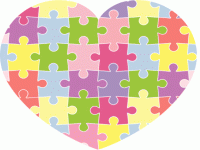Teaching Empathy: Turning a Lesson Plan Into a Life Skill
Worried about the shrinking presence of empathy in our schools? I know how you feel.
With classrooms operating more like grade factories, it's hard to make the case for school-driven empathy. Faced with an endless cycle of memorize, drill, spit back and test, teachers have become the wardens of a new educational reality that pits the head against the heart. Even if educators manage to skate past the dizzying array of standards and value-added evaluations, they must still contend with this fundamental divide: academic rigor, with its unflinching emphasis on measurable success, seems strangely at odds with emotional intelligence, a soufflé of moods and feelings. Which leaves many to wonder -- can empathy feel its way back into the classroom?
For an unlikely accomplice, look no farther than tomorrow's lesson plan. That's because evidence-based models of instruction can become empathy builders, tools for the mind and spirit. Designed around cooperative learning, your lesson plan can actively foster class-wide feelings of cohesiveness, collaboration and interdependence -- without sacrificing instructional time or learning goals.
Cooperative Learning: An Empathy Lever
In cooperative learning, students work together, think together and plan together using a variety of group structures designed along an instructional path. This dynamic learning model breaks with the dusty forms of frontal teaching that often create classrooms of "lonesome togetherness" -- students who may sit together but live worlds apart. Cooperative learning creates what Daniel Goleman calls "cognitive empathy," a mind-to-mind sense of how another person's thinking works. The better we understand others, the better we know them -- pointing toward (among other virtues) greater trust, appreciation and generosity.
But wholesale adoption of cooperative learning does not automatically yield the kind of results that educators want and students need. Dispatching students into "groups" with the hopes they'll become more empathetic carries the same potential for success as trying to hit a dartboard while blindfolded -- maybe a few lucky strikes, but not much more. To harness the power of cooperative learning as a tool for building empathy, teachers need a specific strategy, a best practice that works -- in real classrooms with real students. Fortunately, one exists. It's called jigsaw.
The Jigsaw Classroom: Goals and Execution
Created in 1971 by psychologist Elliot Aronson to defuse his volatile fifth grade classroom, the jigsaw method has a long track record of successfully reducing classroom conflict and increasing positive educational outcomes. As an empathy builder, it also opens doors of opportunity.
In jigsaw classrooms, lesson content is divided into self-contained chunks and assigned piece by piece to different groups of learners. Each group -- strategically arranged to reflect differences in learning style, prior knowledge or socio-economic makeup -- simultaneously studies a different but complementary piece of the lesson. When this "mastery" round is complete, every student should possess unique knowledge of one slice of the lesson. Groups are then reshuffled to form new units that draw a member from each of the mastery teams. Working in these newly minted teams of "experts," each student shares a brand new piece of content with team members who only now learn that particular lesson segment. When every group has finished sharing information, checking for understanding and re-teaching complicated points, the jigsaw activity is over.
To be sure, jigsaw classrooms look and feel almost nothing like their traditional counterparts -- and neither do the students who occupy them. The fluid movement, flexible groupings and redistribution of responsibility force kids to be more actively engaged in what and how they learn. Unlike the slow drip of frontal instruction, jigsaw learning flows freely between group members. Familiar roles change, too. Teachers re-outfit themselves as sideline reporters, monitoring, questioning and analyzing the action, while the quickest and slowest students suddenly discover themselves in supporting and leading roles they never quite imagined.
Educational Empathy: Learning by Doing
The most powerful feature of jigsaw learning -- the very reason behind its conception -- is practiced empathy. Creating points of contact between students who would otherwise not interact delivers a humbling but elevating awareness of the "other." Seeing classmates as bona fide sources of knowledge builds emotional capital and lowers the artificial gates of detachment. Students learn quickly to adhere to jigsaw's inviolable rule: "Tune in or miss out." In this social construct, the hard currency is active listening, or the art of thinking about what the other person is saying. And because each student has a purpose (a teaching role) and something valuable (new and necessary information), every learner is regarded as an asset, not a liability. To the unsuspecting student, all this may seem like a lesson plan. But to the empathetic educator, it's a life skill.
All told, jigsaw learning is a counterweight to the high-stakes testing culture that too often tears kids apart instead of stitching them together. It recognizes that behind every educational label stands an alternate version of the child waiting to be exposed. Jigsaw is rooted in research, embedded in instruction, and aligned with the wider world. There's no simple way to catch a quality as elusive as empathy, and with oversized federal mandates, precious little time. But a "total education," the kind we want to give every student, ought to value not just what children know, but how they feel.
